I have a large data.frame with 'staggered' data and would like to align it. What I mean is I would like to take something like
and remove the leading (top) NAs from all columns to get
I know about the na.trim function from the zoo package, but this didn't work on either the initial data.frame presented above or its transpose. For this I used, with transposed dataframe t.df,
t.df <- na.trim(t.df, sides = 'left')
This only returned an empty data.frame, and wouldn't work the way I wanted anyway since it would create vectors of different lengths. Can anyone point me to a package or function that might be more helpful?
Here is the code for my example used above:
# example of what I have
var1 <- c(1,2,3,4,5,6,7,8,9,10)
var2 <- c(6,2,4,7,3,NA,NA,NA,NA,NA)
var3 <- c(NA,NA,8,6,3,7,NA,NA,NA,NA)
var4 <- c(NA,NA,NA,NA,5,NA,2,6,2,9)
df <- data.frame(var1, var2, var3, var4)
# transpose and (unsuccessful) attempt to remove leading NAs
t.df <- t(df)
t.df <- na.trim(t.df, sides = 'left')

